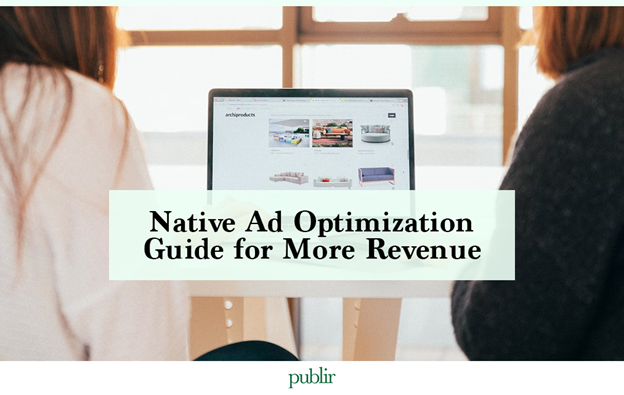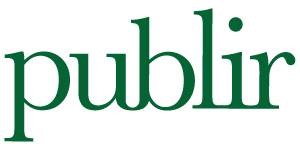
Native ads are becoming increasingly popular amongst publishers as they offer a better non-intrusive user experience and generate more revenue. They tend to overcome the human tendency to ignore the banner and help publishers earn more from their advertisements by effectively blending with the medium and content.
Statistics suggest that native advertising will grow 12.5% YoY in 2023, reaching almost $98.59 billion. The largest share of native ads will be the native social ads on Facebook and Twitter. Therefore, it is imperative for organizations to learn to optimize their native to increase their revenue.
Understanding Native Advertisements
Native ads are advertising that seamlessly blends with the medium it showcases on. Native ads use the same format as the content of the website. For instance, a native ad can be an article on a website that contains editorial content. Native advertising is more user-centric as it does not intrude on the user experience on a particular website. There are three major components of native advertising :
- Ad Attribution: Since native ads look exactly like the content, they appear on the publisher’s website. Ad attribution helps users distinguish between the content and native ads by attaching a badge to the native ad.
- Advertiser Elements: These elements depend on the components provided by the advertiser.
- AdChoices Overlay: This is present in the upper right-hand corner of the native ad. The AdChoices overlay contains a link the advertiser provides to target specific customers.
Methods to Optimize Native Ads
There are several ways to optimize native ads to increase your revenue.
1. Maximize the Relevance of Your Ads

You want to display the ads that are most relevant to your audiences. For instance, if they are reading a post about wine, they should not get advertisements for bathroom tiles. Non-congruent ads do not lead to high conversion rates and affect your user’s trust. Relevant ads will lead to greater audience trust and higher revenue.
As such, you must ensure that your ads are relevant to your audiences before placing them on any website. To check relevancy, act as the user of your website. If the ads displayed on the site seem relevant, stick with them. Otherwise, test different ad networks to find the most relevant one.
2. Use a Variety of Ad Networks
As discussed above, users easily ignore default ad creatives and positions, which leads to fewer clicks on the advertisements and lower revenue. As such, advertisers must create several ads to make their campaign successful. A variety of different ad networks boosts audience engagement.
As your audience notices that you are offering newer and more relevant ads, they will become more interested. If the users have already seen the ad on their Facebook or Instagram, they will ignore your ad. Therefore, ad rotation is an effective technique to keep your readers engaged
3. Be Honest With Your Readers
Native advertisements are meant to blend in with your website. They are supposed to elevate the users’ experience. Tricking your readers into clicking on these advertisements will backfire on you. Your readers are the lifeline of your website; if you trick them, they will not return to your page. Delineate your native advertisements from your website’s content.
You don’t want the user’s disappointment and frustration when they click on your link only to discover that it was an advertisement. The ad should not be misrepresented in a way that the user clicks on it unintentionally.
4. Take Advantage of Automation
Leverage automation tools to optimize the ads on your website. For instance, automation through split testing is a great way to increase your native ad revenue. Split testing headlines are a common form of automation. In this, publishers can test two or more headlines through automation. The system automatically chooses the headline that receives the most user engagement and maximum clicks.
You can also use automation to test font color and style. This will allow you to view metrics that work best for your audiences.
5. Test Different Ad Layouts
Like headlines, you can also test different ad layouts with the help of automation. You can find the ideal ad layout or placement that receives the most user engagement. Automation allows you to test pre-defined ad placements, track user behavior for each layout and test different ad units and sizes. Automation has become more robust than ever. Automated systems continuously optimize your website based on user behavior.
6. Use Content Recommendation Systems
While in-feed ads work for most websites, adding more story views provides a revenue boost to your website. This additional content may come in the form of widgets that allow users to view related stories or sponsored content. This allows users to redirect to other pages of your website and provides you with additional ad opportunities to generate revenue. By redirecting the traffic to other website pages, you increase user engagement and gain opportunities to earn additional revenue.
7. Test Different Ad Types
There are several ad types – CPC, eCPM and CPA. You can test these different ad types to see what works out the best for your website.
- CPC: Content-heavy websites generally go with the cost-per-click model. The eCPM model may be more relevant to you if you have more images.
- eCPM: This is called earnings per 1000 impressions. This model is ideal for larger websites with a lot of traffic. It is a great way to earn revenue even when the users are not engaging with the content.
- CPA: This is referred to as the cost-per-action model. It is related to affiliate marketing. In this model, you will earn money when a user signs up for a service and provides their information.
Just like other ads, testing is important in native ads to increase your revenue. Optimizing the ad layout should ensure that you are not tricking your users into clicking the advertisements.
At Publir, we are committed to maximizing the revenue of content creators by offering holistic solutions for AdBlock recovery, ad optimization, subscriptions, merchandising, and fundraising. We use the best practices and automation tools to collect recurring revenue and engage users. Curious about ad optimization? Visit us here or email us at sales@publir.com to get started today.
